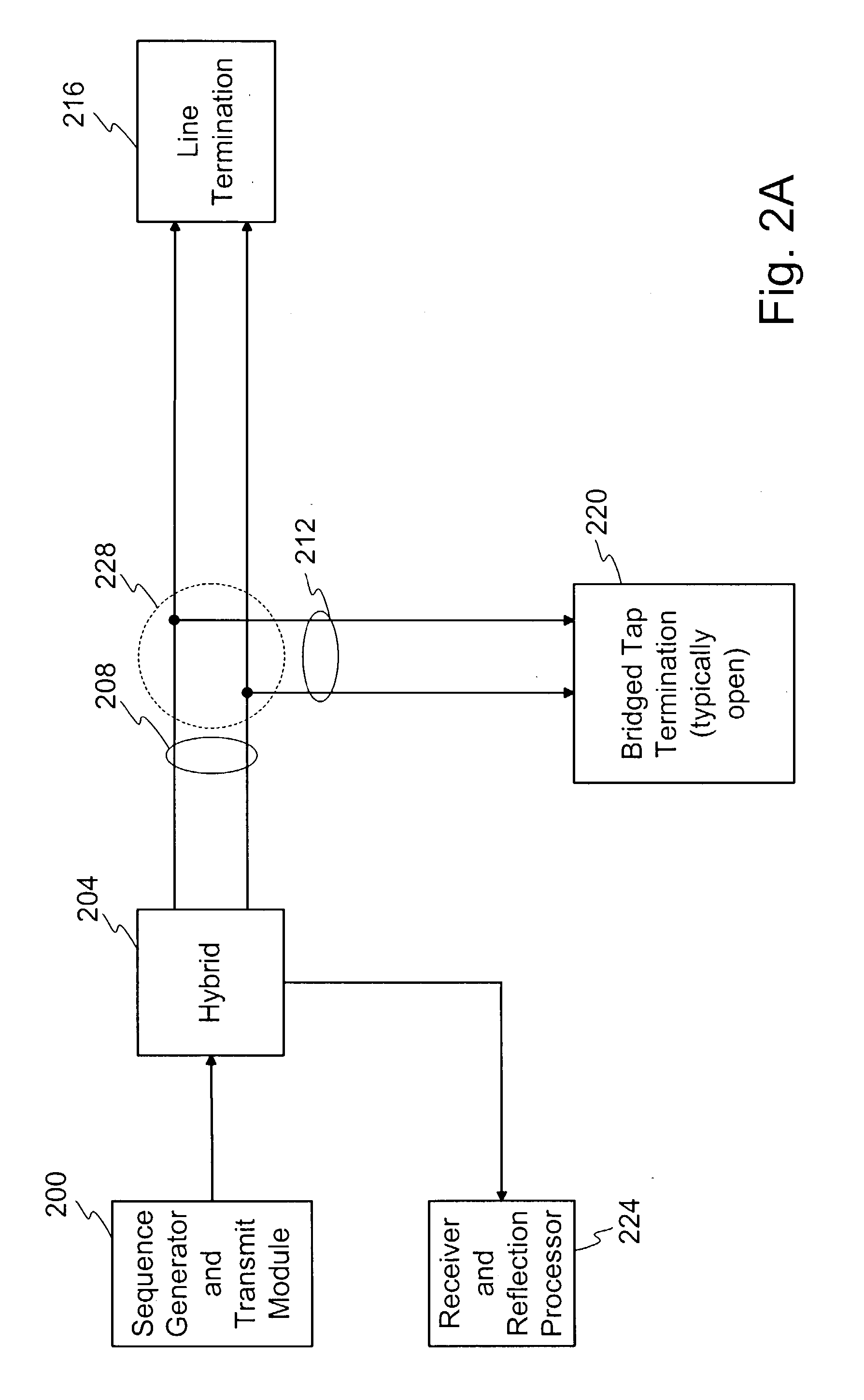Optical sequence time domain reflectometry during data transmission
a technology of optical sequence and reflectometry, applied in the field of optical sequence time domain reflectometry during data transmission, can solve the problems of lowering the cost of dispatching, reflection or echo, and expensive dispatching of service technicians
- Summary
- Abstract
- Description
- Claims
- Application Information
AI Technical Summary
Problems solved by technology
Method used
Image
Examples
Embodiment Construction
[0102] FIG. 4 illustrates a more detailed block diagram of an example embodiment of one configuration of the invention. Broadly, the elements of FIG. 4 includes a transmit module 400 and a receive module 404. Connecting the transmit module 400 and the receive module 404 is a line interface 408 and other possible logic and lines (not shown). The line interface 408 connects the transmit module 400 and the receive module 404 to a communication channel 412. The line interface 412 includes apparatus to separate or filter the transmitted signal from the received signal and attempts to impedance match the transmit module 400 to the channel 412 and the receive module 404 to the channel. In one embodiment, the line interface 408 comprises a hybrid. The line interface 408 may also be configured to interface a single conductor of the transmit module 400 or the receive module 404 to twisted pair conductors. Although designed to reduce impedance mismatch, the line interface 412 often creates som...
PUM
 Login to View More
Login to View More Abstract
Description
Claims
Application Information
 Login to View More
Login to View More - R&D
- Intellectual Property
- Life Sciences
- Materials
- Tech Scout
- Unparalleled Data Quality
- Higher Quality Content
- 60% Fewer Hallucinations
Browse by: Latest US Patents, China's latest patents, Technical Efficacy Thesaurus, Application Domain, Technology Topic, Popular Technical Reports.
© 2025 PatSnap. All rights reserved.Legal|Privacy policy|Modern Slavery Act Transparency Statement|Sitemap|About US| Contact US: help@patsnap.com



